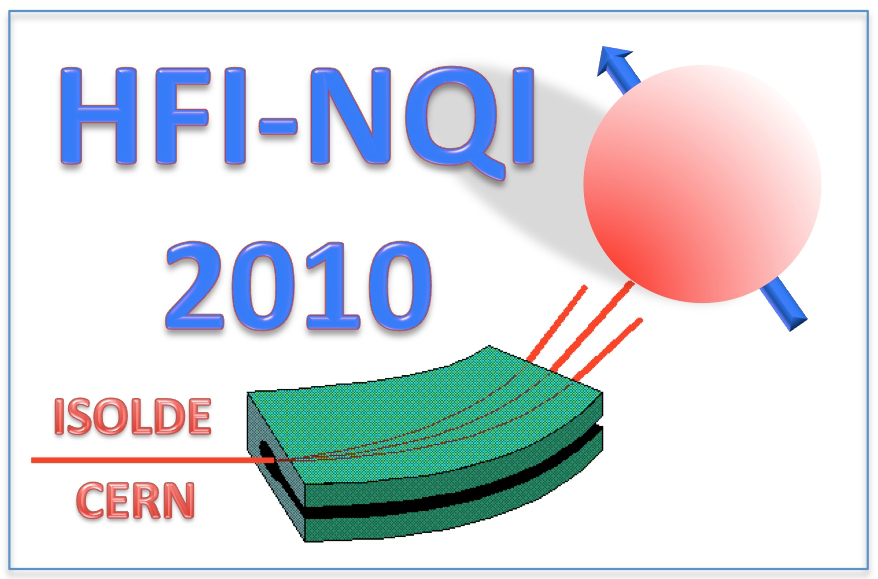Speaker
Description
Summary
Nuclear magnetic resonance of oriented nuclei (NMR-ON) has been widely applied in the study of the electromagnetic properties of unstable nuclei and hyperfine interactions of dilute impurities in ferromagnetic metals. The hyperfine anomaly arises from the hyperfine interaction of the finite nuclear volume of nuclear magnetization and hyperfine field due to Fermi contact. The difference between the point nuclear magnetic structure and the finite magnetic structure is referred to as the Bohr-Weisskopf effect, which depends on the nuclear structure. In order to study the hyperfine anomalies of Pt isotopes, NMR-ON experiments on 197Pt in Ni was measured.
Samples of 197PtNi were prepared with thermal neutron irradiation. Thin alloy foils of PtNi (0.1 at. % of the 96% enriched 196Pt) were irradiated in the reactor at the Japan Atomic Energy Research Institute. After irradiation, the sample was annealed in vacuum for 30m at 800 °C and was cooled down to about 7 mK using a 3He/4He dilution refrigerator. The b rays from 197Pt were measured by two Si detectors mounted in the refrigerator at 0 and 180° with respect to the external magnetic field of 0.2, 0.4 and 0.6 T. NMR-ON spectra were observed by detecting the b-ray asymmetry change with rf oscillating fields. Fig. 1 shows typical NMR-ON spectra of 197PtNi. For pure magnetic interaction, the resonance condition is given by hn = | g { Bhf + (1+K)B0 } | mN. From least-squares fits of the resonance frequencies vs the external magnetic fields, the resonance frequency at B0 = 0 of n0(197PtNi) = 230.7(1) MHz. Comparing with the magnetic resonance frequency of 191PtNi [1] and the magnetic moments determined by atomic beam method [2], the hyperfine anomalies of Pt isotopes were deduced; 191D197 = 12(5) %. It is too large compared with the theoretical value (+0.2%). We also deduce the hyperfine anomaly with 195Pt [3,4] that has a same spin and parity as 195D197 = 15(5)%. From these large values, the experimental value of magnetic moment for 197Pt should be wrong.
References
[1] G. Seewald et al., Phys. Review B66, 174401 (2002).
[2] Y.W. Chan et al., Bull. Am. Phys. Soc. 13, No.6, 895 CE14 (1968).
[3] M. Kontani and J. Itoh, J. Phys. Soc. Japan 22, 345 (1967)
[4] W.G. Proctor and F.C. Yu Phys. Rev. 81, 20(1951)
| Are you a student, a delegate from developing countries or a participant with physical needs and would like to apply for a sponsored accomodation. Please answer with yes or no. | no |
|---|---|
| Please specify whether you would prefer an oral or poster contribution. | poster |
